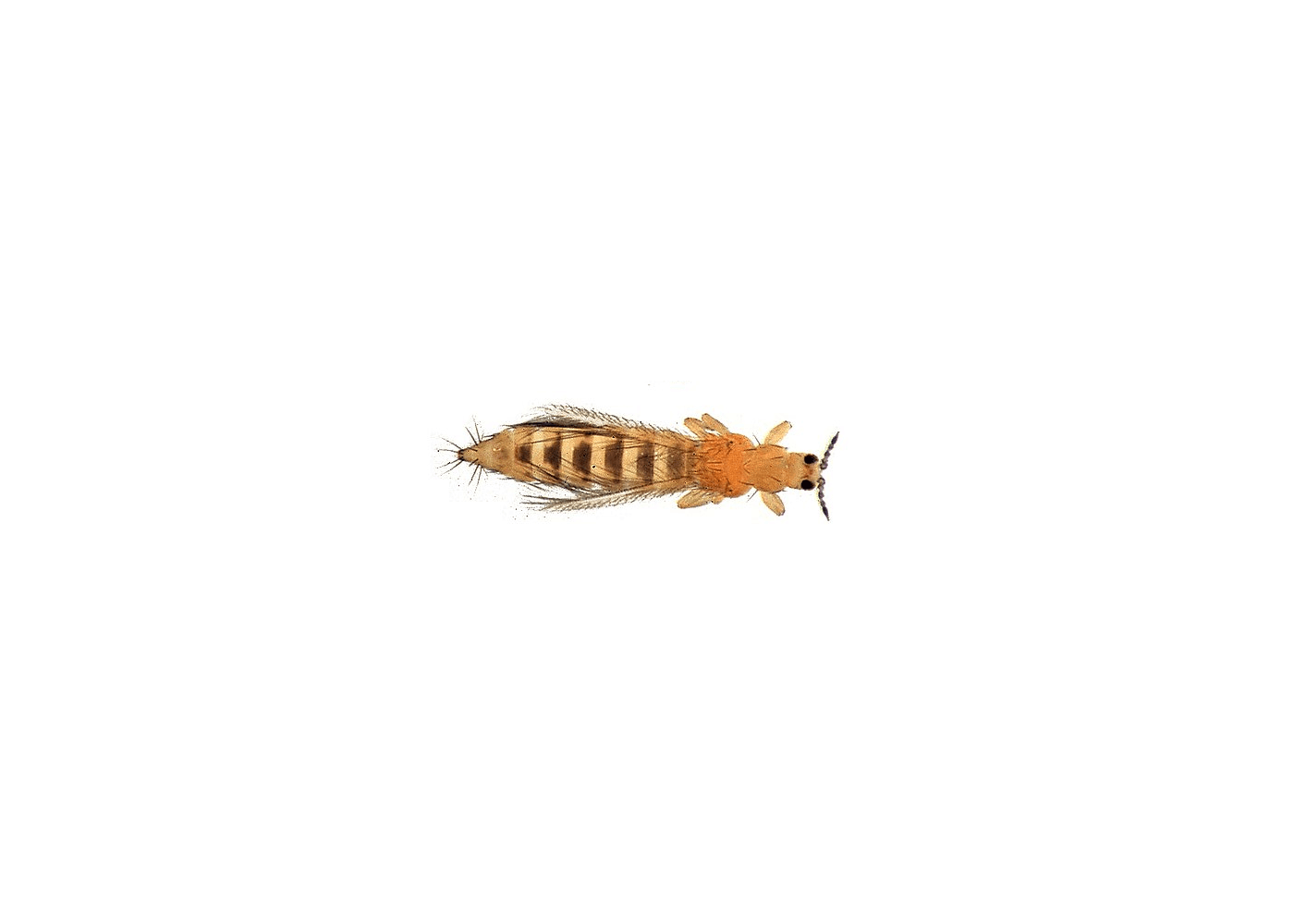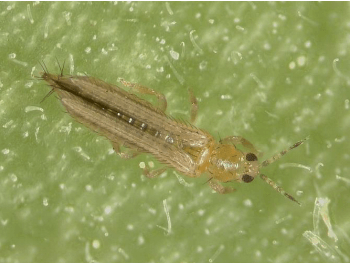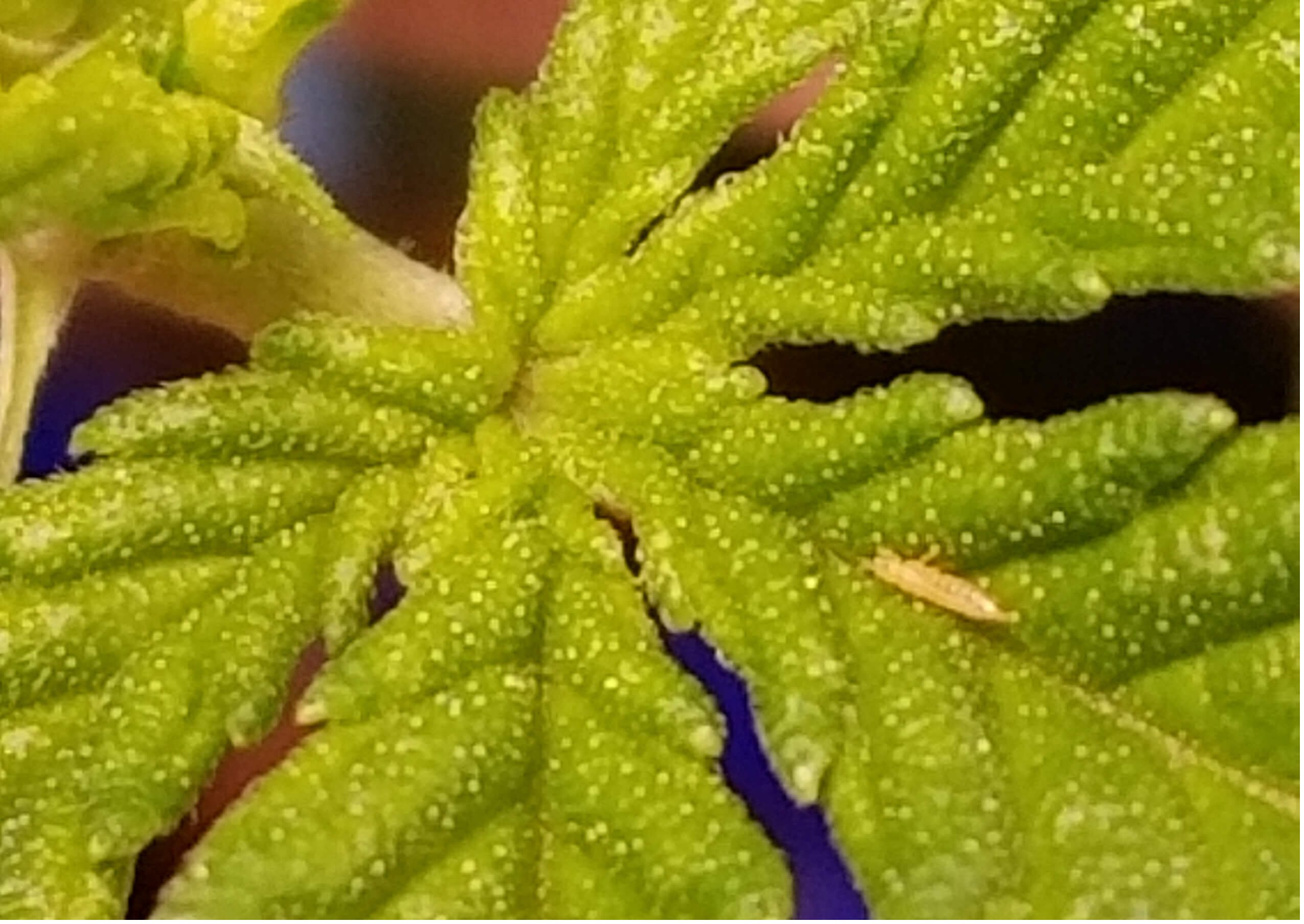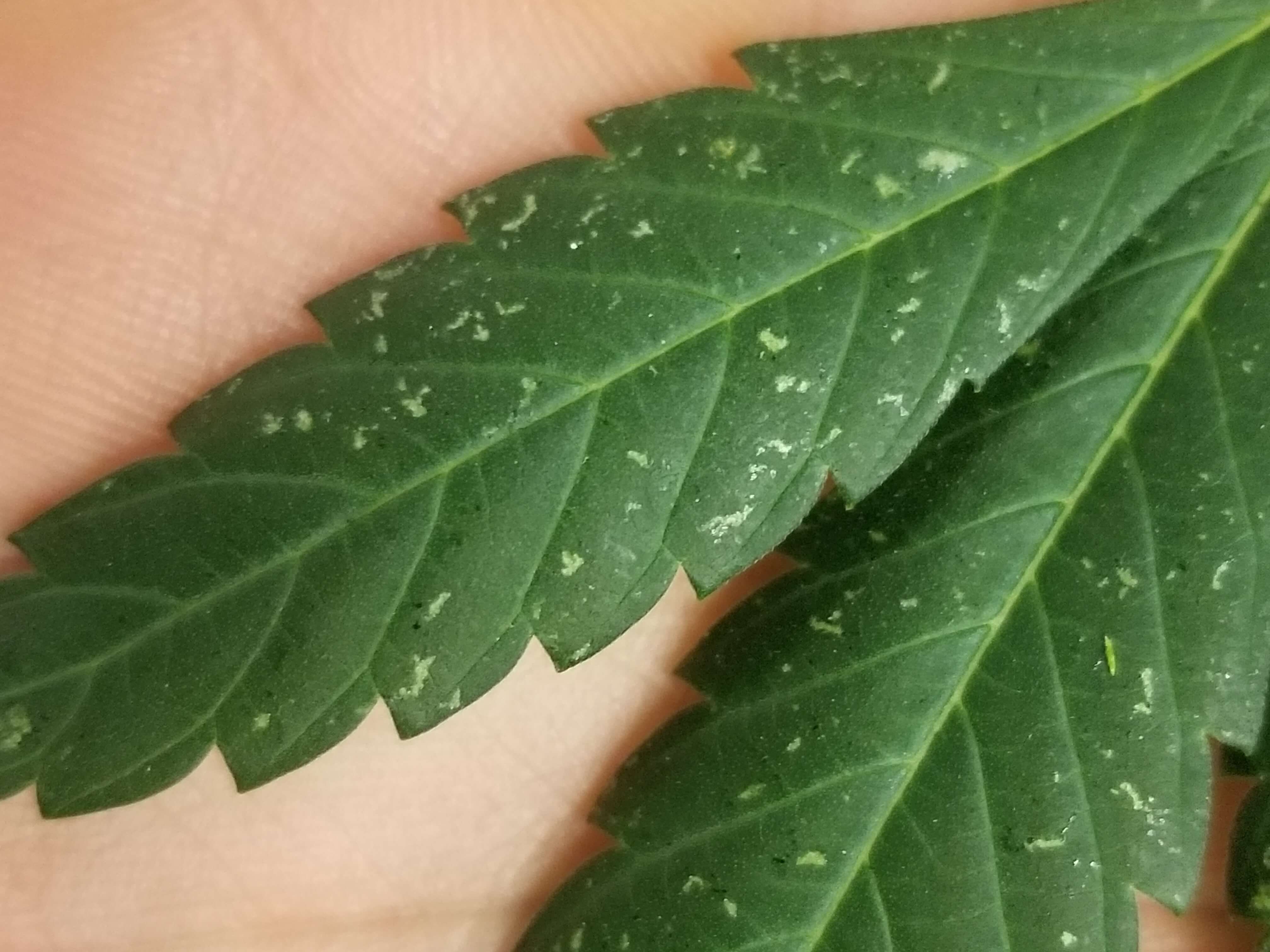- What Are Thrips?
- Life Cycle of Thrips
- Immature Thrips
- Adult Thrips
- Integrated Pest Management
Introduction
Thrips are tiny, flying insects that are considered a common pest among cannabis cultivators for indoor spaces and greenhouses. They feed by rasp-sucking the leaves of plants causing the leaf’s contents to spill out. The damage from this feeding can result in discolored flecking or silvering of the leaf surface that appears in streaks. Even though there are certain thrips that are beneficial predators that feed on other insects and mites, this blog post will focus on thrips that feed on cannabis plants.

Thrips or a thrips, the singular and the plural are both the same, undergo what is known as an incomplete metamorphosis (also gradual metamorphosis) from the time that they hatch to the time that they reach full maturity. There are three main phases to an incomplete metamorphosis and they are eggs, immature nymphs, and adults. These phases do not change dramatically in appearance and they feed on the same host plants. There are many varieties of Thrips, but the western flower thrips (Frankliniella Occidentalis) are the most commonly found affecting cannabis plants and many other herbaceous plants as well.
Immature Thrips
Thrips begin their life in an egg from which they hatch and go through two nymph, or larval, stages before reaching full maturity. A female thrips will lay their kidney-shaped eggs on or into leaves where larvae can feed after hatching. The larval forms actively feed on plant matter, usually the topsides of cannabis leaves by rasping or scraping the surface of the leaf and consuming the fluids that seep from the wound. The damage caused by feeding thrips can leave silvery streaks. When the larval phase is complete the western flower thrips start their prepupa and pupa stages. The prepupa and pupa stages are passed in the soil for cannabis plants and they are considered non-feeding life stages until the thrips reach adult form. In these life stages, thrips are slender, wingless, and translucent white to yellow in color.

Adult Thrips
In ideal environmental conditions, the life cycle from egg to adult may be completed in as little as two weeks as each life stage can take several days to complete. Western flower thrips are approximately 2mm (less than 1/10th of an inch) in length and characterized as having an elongated and slender black body with long and narrow colorless wings. Adult thrips resume feeding on their host plant by using their rasping mouthparts that scrapes the surface of plant leaves as its contents spill out.

Integrated Pest Management
Thrips infestations can reduce the aesthetic quality of cannabis plants, and in more severe cases can stunt the growth of young and vulnerable plants. Light blue sticky traps suspended a foot or two above the indoor plant canopy can be used to indicate the level of thrips infestation in the room as thrips fall prey and stick to the trap. Biopesticides such as horticultural oil sprays and other contact insecticides such as azadirachtin, insecticidal soaps, and pyrethrins are all effective chemical controls for thrips indoors. Cultivators must decide when to use certain control efforts and how to implement them into the grow effectively.

Comments powered by Talkyard.